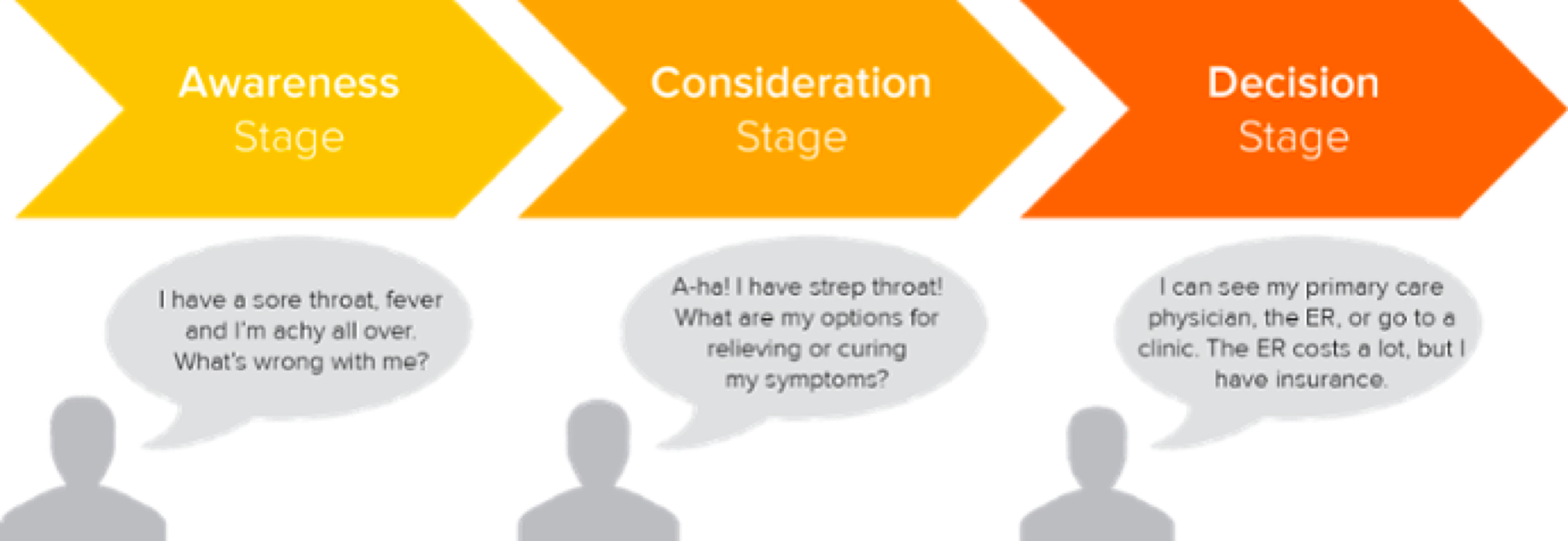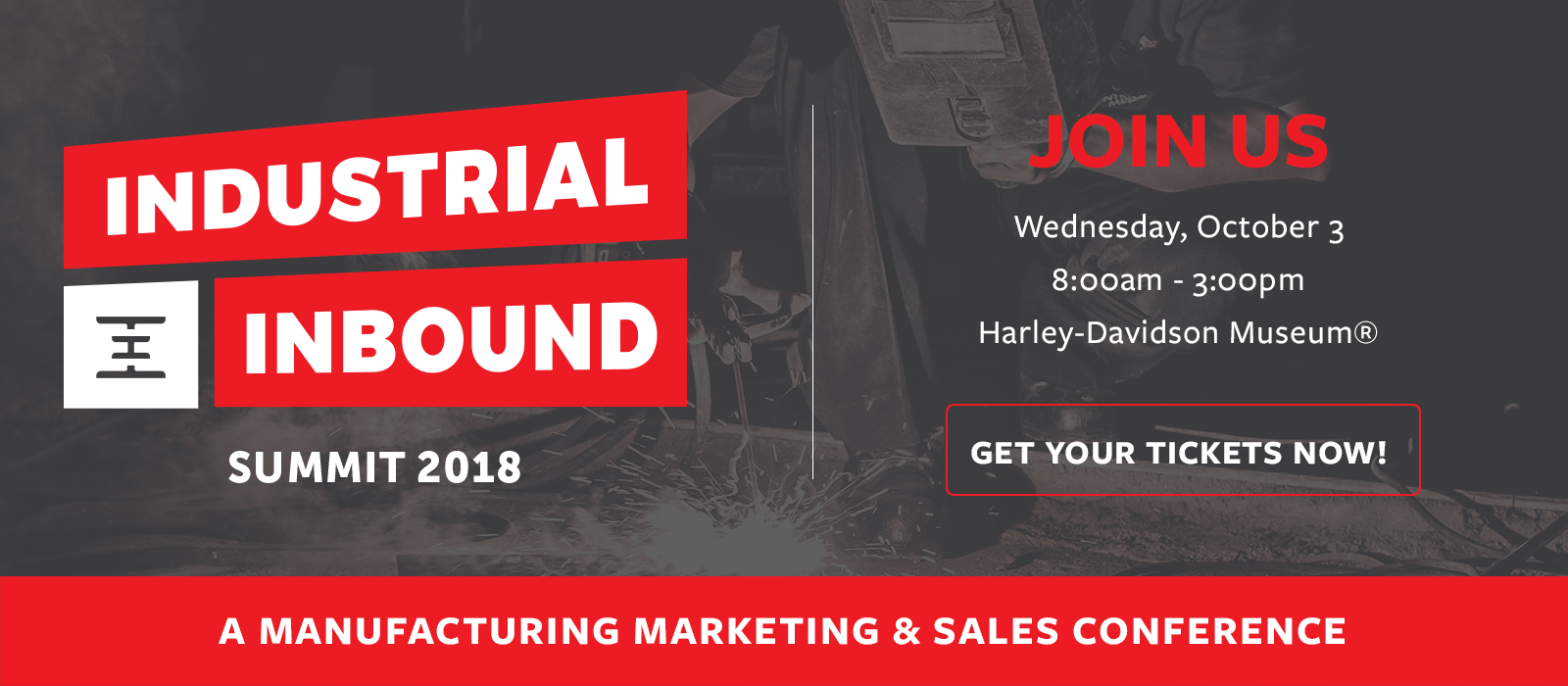Guest Blog by Todd Hockenberry, of Top Line Results and co-author of Inbound Organization
Helping People is Your Best Strategy
![]() In the first article in this series we discussed how to build a predictable revenue stream for manufacturing companies. The first change you must make is to adopt an inbound mindset, one that matches modern buyers expectations. If you think like buyers then your company is able to put yourself in their shoes, and understand how you help them achieve their goals. Then you start marketing and selling how you help people achieve those goals instead of pitching and promoting your product first.
In the first article in this series we discussed how to build a predictable revenue stream for manufacturing companies. The first change you must make is to adopt an inbound mindset, one that matches modern buyers expectations. If you think like buyers then your company is able to put yourself in their shoes, and understand how you help them achieve their goals. Then you start marketing and selling how you help people achieve those goals instead of pitching and promoting your product first.
Once you have the inbound mindset connecting with buyers, creating a remarkable customer experience, and driving customer success are the next steps once a customer focused mission, culture, and messaging are in place, resulting in a predictable revenue engine for manufacturing companies. And to create a great customer experience you must be helpful first.
How Helpful is Your Company?
Manufacturing companies typically develop strategy formulations around ideas like developing a mission statement, outlining your values, determining your core competences, your key messages, what resources you may have, market research, SWOT analysis, accountabilities, and so on.
And they are all important, but typical manufacturing strategy development misses the changes in buyer behavior because it is too inwardly focused. Modern buyers don’t care about that strategy document on your desk or mission statement on the wall. They only care about how much you help them and if their experience with your team, products, and company were extraordinary.
Typical manufacturing strategy development is more about planning activities and tactics than it is about creating differentiation and competitive advantage. This happens because you control your tactics. What you do every day is your choice. So, naturally that is what companies and managers gravitate towards.
Not so. Your customers are the ones in charge of your revenue, no matter how much the sales department thinks it is.
Remember this statistic, 74% of sales go to the first company that was helpful.
74% of sales go to the first company that was helpful.
How many manufacturing and industrial companies or for that matter any company actually ask the most strategic question they can ask in this age of the modern, empowered, educated, digital buyer?
How helpful are we?
Why is that is the most strategic question to ask? Because that is what your customers want and they will reward the company that gives it to them.
I am not talking about tactics. A strategy based on the idea of helping is about how you fundamentally improve your customer’s world, solve their problems, and deliver them the change they need. Will you help customers in such a way that you create an amazing experience that keeps them coming back for more? And more importantly, telling the world how great you are.
To engage anyone, to start and build a relationship, based on trust, that ends up with them buying from you requires you to be helpful first. Developing a strategy to be helpful drives your relationships with prospects, customers, and even your partners and employees. Trying to execute any other business strategy without being helpful will lead to failure with today’s buyer. You may win at first or even for a while, but someone in your competitive space will figure out how to deliver a superior customer experience by being much more helpful than you and destroy your strategy, positioning, mission statement, and planning. And that company is never more than a click away from any of your customers.
In the book Inbound Organization, Marcus Sheridan says,
“Helping is the essence of the “they ask, you answer” idea. We don’t base our decisions on competitors. We don’t base our decisions on bad fits that aren’t ideal customers or clients anyway. We base our decisions on prospects that are a good fit for our business. If that is whom we’re focused on, then it gives us the ability to communicate however we want and be totally honest and be totally real. We don’t have to fluff it; we don’t have to do any of that stuff. We can be straightforward with the information and give it to people directly. That wins us trust, and ultimately trust is what drives revenue.”*
Two Disciplines To Creating A Strategy Of Helping First
![]() Beliefs lead to behaviors resulting in outcomes. If you want to help then the two things you must know are who you help the most and when they need it. In other words, you must create a buyer persona and develop an understanding of their buyer’s journey.
Beliefs lead to behaviors resulting in outcomes. If you want to help then the two things you must know are who you help the most and when they need it. In other words, you must create a buyer persona and develop an understanding of their buyer’s journey.
Ask yourself, do you really know why and how your customers buy, or do you just hope the order shows up?
Most industrial, manufacturing, and technical people think of innovation as improving features compared to competitors, rarely is innovation thought of in terms of helping customers achieve their goals, faster, better, and more completely as well as finding new ones to achieve. Innovation is now critical for industrial companies in the area of manufacturing marketing, sales, service and delivering a great customer experience. The product is no longer enough. Spray and pray is not a good strategy. You must focus on a specific persona.
Adele Revella, the expert at developing buyer personas says,
“so many of our clients are in mature markets where frankly there’s at least a half a dozen other companies that can solve the problem pretty well from the buyer’s perspective. Let’s have the buyer’s ability to trust us and get their questions answered be the differentiator in terms of our ability to win that business.”*
A persona is the embodiment of the buyer you exist to serve. A persona is a description and understanding of your ideal target person that needs your help.
Do you have a narrowly defined target persona and understand how they bring about the changes internally required to buy your product? If not then you are probably talking product, features, and benefits and not about buyers want to talk about - their issues, their, problems, and most importantly what they need to do to be successful personally and professionally.
“We are always looking back and asking if we are creating stuff for the optimal buyer, because we think it is easy to be distracted by what we want to write about, or what we think is cool, or what we think is new, or what we think is relevant. But if it’s not going to be something our persona is looking for, then it doesn’t make sense for us to spend our time talking about it.” says Suneera Madhani CEO Fattmerchant.*
It may not be obvious but each customer has a unique buying journey. There are similarities, but each person follows a slightly different pace, intensity, breadth, and process before they buy. Understanding how and when buyers move from one stage to the next in the journey is important in order to help them facilitate the changes needed to receive the help your product or service provides.
Does your sales team act as a change agent or a product information regurgitator? You cannot help buyers change if you don’t know the hurdles, barriers, roadblocks, and challenges on the journey they will take.
There are many ways to outline a buyer journey and buyers today do not tend to follow a straight line path from prospect to lead to customer. The journey can be short and intense or long and messy. But all journeys tend to go through 3 main stages plus one after the sale.

Image courtesy of HubSpot
Awareness - the buyer understand they might have a problem and starts to research possible solutions, typically started online even for complex B2B issues.
Consideration - the buyer is beginning to define the problem and seeks specific possible options to solve it.
Decision - the buyer evaluates the best options and makes a choice.
Success is the fourth stage and is the the time when customers actually achieve the goals they set out to reach by hiring you in the first place.
A great customer experience is intentionally created - it does not just happen. Superior customer experiences are intentional and come from a strategy that includes a specific, focused persona description and a buyer journey mapped and understood so your team is able to deliver the right help at the right time.
Buyers expect nothing less from industrial and manufacturing companies today.
*Inbound Organization, Wiley 2018
Todd Hockenberry will be the keynote speaker at Industrial Inbound Summit 2018. Hockenberry will be speaking on the culture of customers first, and why growing sales starts with internal change. The Industrial Inbound Summit is a one-day event, where manufacturers will create custom marketing & sales playbooks with expert instruction from our speakers and on-site marketing advisors. Learn more about this event here.





